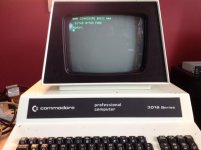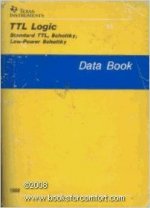JonB
Veteran Member
All voltages present and correct in Bank 1.
Bank 2 is missing -5v on one socket, but that's not in use right now.
Bank 2 is missing -5v on one socket, but that's not in use right now.
| VCF West | Aug 01 - 02 2025, | CHM, Mountain View, CA |
| VCF Midwest | Sep 13 - 14 2025, | Schaumburg, IL |
| VCF Montreal | Jan 24 - 25, 2026, | RMC Saint Jean, Montreal, Canada |
| VCF SoCal | Feb 14 - 15, 2026, | Hotel Fera, Orange CA |
| VCF Southwest | May 29 - 31, 2026, | Westin Dallas Fort Worth Airport |
| VCF Southeast | June, 2026 | Atlanta, GA |
READY. @@@@@@@@@//LOAD
; 007C E62E BC AC XR YR SPYes, keep finding bad RAM connections. Concentrate on the "I" row of chips as they are needed to boot (low address RAM). It is trying to come up but needs good zero page RAM (address 0000 - 0100) and stack area (0100-0200). You are close!Some progress, I think.
### COMMODORE BASIC ###
31743 BYTES FREE
READY.
and if your PET is sick, you can fix it with only basic equipment (multimeter, logic probe, soldering iron, solder sucker) and consumables (solder plus whatever chips need replacing, and sockets for the chips). The key is determination, and to take a break whenever you feel frustrated.
and if your PET is sick, you can fix it with only basic equipment (multimeter, logic probe, soldering iron, solder sucker)
Edit: Took all the RAM from Bank 2 and the 74LS157 (UH4) is dead again. No /CAS. UG7 that feeds it is OK. Also some anomalies on the address bus. Very odd! New 157 ordered..
I have ordered some 157s. As I said, all the other outputs are working, and I tested at the IC leg, not the board. I'm fairly sure the IC has popped.
Meet your new best friend: :DHmmm, thanks. Gotta confess the actual function of some of these 74 series chips is a bit beyond me sometimes.

